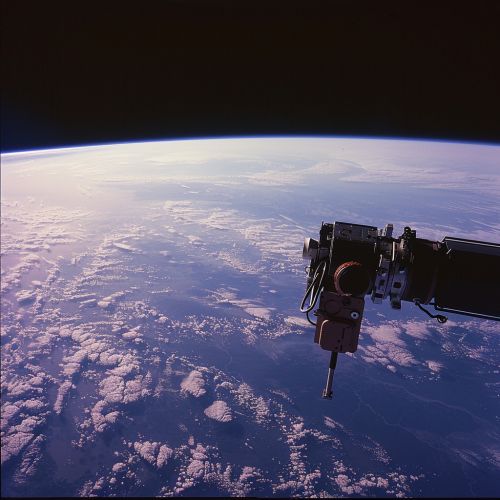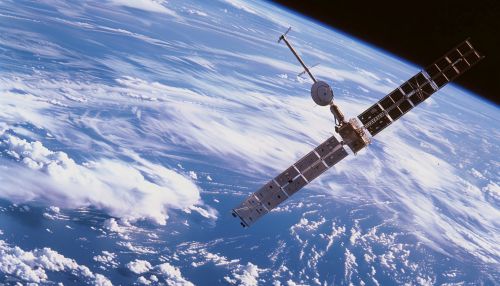Microwave Radiometer
Introduction
A microwave radiometer is a specialized instrument used to measure the intensity of microwave radiation. These devices are essential in various scientific fields, including meteorology, oceanography, astronomy, and remote sensing. By capturing and analyzing microwave emissions from different sources, microwave radiometers provide valuable data for understanding atmospheric conditions, sea surface temperatures, and cosmic phenomena.
Principles of Operation
Microwave radiometers operate based on the principle of thermal radiation. All objects emit electromagnetic radiation proportional to their temperature, and this emission includes microwaves. The radiometer detects these emissions and converts them into electrical signals, which are then processed to determine the temperature and other properties of the emitting source.
Antenna
The antenna is a critical component of a microwave radiometer, responsible for capturing microwave radiation from the target area. It can be a horn antenna, a parabolic reflector, or an array of smaller antennas, depending on the specific application and frequency range.
Receiver
The receiver amplifies the weak microwave signals captured by the antenna. It typically includes a low-noise amplifier (LNA) to minimize the addition of noise during amplification. The receiver also down-converts the microwave signals to a lower frequency for easier processing.
Calibration
Calibration is crucial for accurate measurements. Microwave radiometers use internal and external calibration sources to ensure the reliability of the data. Internal calibration often involves noise diodes, while external calibration can include blackbody references or sky tipping techniques.
Applications
Microwave radiometers have a wide range of applications across various scientific disciplines.
Meteorology
In meteorology, microwave radiometers are used to measure atmospheric temperature and humidity profiles. They provide data on water vapor, cloud liquid water, and precipitation, which are essential for weather forecasting and climate studies.
Oceanography
Microwave radiometers measure sea surface temperatures and salinity, which are critical for understanding ocean circulation and its impact on global climate. They are also used to monitor sea ice extent and thickness.
Astronomy
In astronomy, microwave radiometers are employed to study cosmic microwave background radiation, providing insights into the early universe. They also help in the observation of galactic and extragalactic sources.
Remote Sensing
Microwave radiometers are integral to remote sensing applications, including soil moisture monitoring, vegetation analysis, and snow cover assessment. They provide valuable data for agricultural management, hydrology, and environmental monitoring.
Types of Microwave Radiometers
There are several types of microwave radiometers, each designed for specific applications and frequency ranges.
Total Power Radiometers
Total power radiometers measure the total power of the incoming microwave radiation. They are simple and widely used but require frequent calibration to maintain accuracy.
Dicke Radiometers
Dicke radiometers use a switching mechanism to compare the target signal with a reference signal, reducing the impact of receiver noise. This design improves measurement stability and accuracy.
Noise-Adding Radiometers
Noise-adding radiometers introduce a known noise signal into the receiver path, allowing for continuous calibration. This method enhances the precision of the measurements.
Correlation Radiometers
Correlation radiometers measure the correlation between signals from two or more antennas. They are used in interferometry and other applications requiring high spatial resolution.
Technical Specifications
Microwave radiometers are characterized by several technical specifications that define their performance and suitability for different applications.
Frequency Range
The frequency range of a microwave radiometer determines the type of radiation it can detect. Common frequency bands include L-band, C-band, X-band, and K-band, each suited for specific measurements.
Sensitivity
Sensitivity, often expressed as noise equivalent temperature difference (NETD), indicates the smallest temperature difference the radiometer can detect. High sensitivity is essential for accurate measurements in low-emission environments.
Spatial Resolution
Spatial resolution refers to the smallest area that the radiometer can distinguish. It is influenced by the antenna design and the operating frequency. Higher frequencies generally provide better spatial resolution.
Temporal Resolution
Temporal resolution defines the frequency at which measurements are taken. High temporal resolution is crucial for capturing rapid changes in the target area, such as during weather events.
Challenges and Limitations
While microwave radiometers are powerful tools, they face several challenges and limitations.
Atmospheric Interference
Atmospheric gases and particles can absorb and scatter microwave radiation, affecting the accuracy of measurements. Techniques such as radiative transfer modeling are used to correct for these effects.
Calibration Drift
Over time, the calibration of microwave radiometers can drift, leading to measurement errors. Regular calibration and maintenance are necessary to ensure long-term accuracy.
Spatial Coverage
The spatial coverage of microwave radiometers is limited by their antenna design and platform. Satellite-based radiometers provide global coverage but may have lower spatial resolution compared to ground-based systems.
Future Developments
Advancements in technology continue to enhance the capabilities of microwave radiometers.
Miniaturization
The development of smaller, more compact radiometers allows for deployment on a wider range of platforms, including unmanned aerial vehicles (UAVs) and small satellites.
Improved Sensitivity
Ongoing research aims to improve the sensitivity of microwave radiometers, enabling the detection of even weaker signals and more precise measurements.
Advanced Calibration Techniques
Innovative calibration techniques, such as onboard calibration systems and machine learning algorithms, are being developed to enhance the accuracy and reliability of measurements.
Conclusion
Microwave radiometers are indispensable tools in various scientific fields, providing critical data for understanding atmospheric, oceanic, and cosmic phenomena. Despite their challenges, ongoing advancements promise to further enhance their capabilities and applications.


